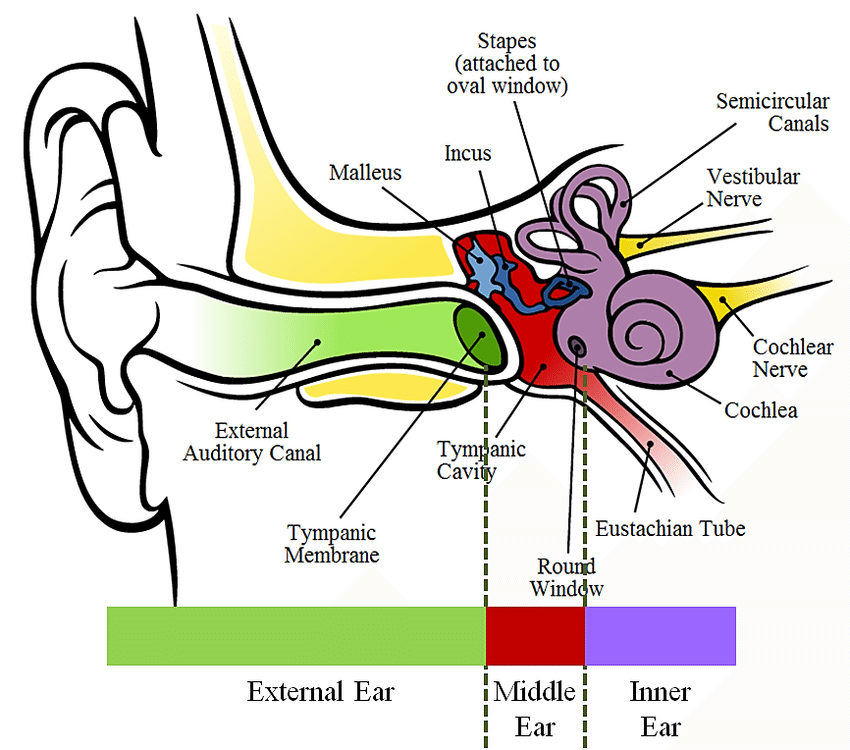How does the hearing system work?

Hearing essential parts
- External ear picks up
The outer ear is made up of the pinna and the external auditory canal. It is the pinna of the ear that captures sound vibrations to route them to the eardrum, via the ear canal.
- The middle ear transmits
The middle ear is an amplifier which in turn propagates sound waves from the tympanic membrane to the inner ear , passing through the chain of the ossicles.
- Inner ear codes
The inner ear is made up of the vestibule, an organ of balance, and the cochlea and its 15,000 sensory cells. It is these latter which translate the vibratory message into nerve impulses . It is then that the nerve impulse leaves the ear by the auditory nerve to be transmitted to the cerebral auditory centers where it will be decoded and interpreted in the form of sounds.
This is how hearing aids work
All hearing aids work on the same principle: they pick up ambient noise, process it and then pass it on to the ear in an amplified manner. However, depending on the degree of hearing loss and personal needs, the hearing aids differ considerably. Not only in size and shape, but also in terms of properties, functions and price. In today’s hearing acoustics world, modern hearing aids work exclusively digitally. The central element is the sound processor’s microchip, which processes the sounds received.
Depending on the type of hearing loss, the chip is programmed in such a way that the tones and frequencies that the wearer of the hearing aid can no longer hear optimally are amplified. The programming is done individually according to the hearing profile and can now take a number of additional aspects into account. In this way, background noises such as traffic noise can be identified and filtered out, the volume can be automatically adjusted, and speech can be recognized and amplified in a targeted manner. Wireless interfaces, via which a hearing aid can be connected to a cell phone, radio or television, offer additional options.
Hearing aids consist of a microphone, sound processor and loudspeaker. The microphone picks up the sound, the sound processor adapts the signals according to the individual programming according to the needs of the wearer, and the loudspeaker reproduces them.


